Even after years in business, weekend tables here can be booked out a month in advance. The price point far exceeds its competitors. Granted, expectations are soaringly high, but something here failed to hit the high notes.
There are a few telltale signs that a restaurant relies solely on outstanding food to create the experience, no gimmicks or distractions needed.
La Mole is such a restaurant.
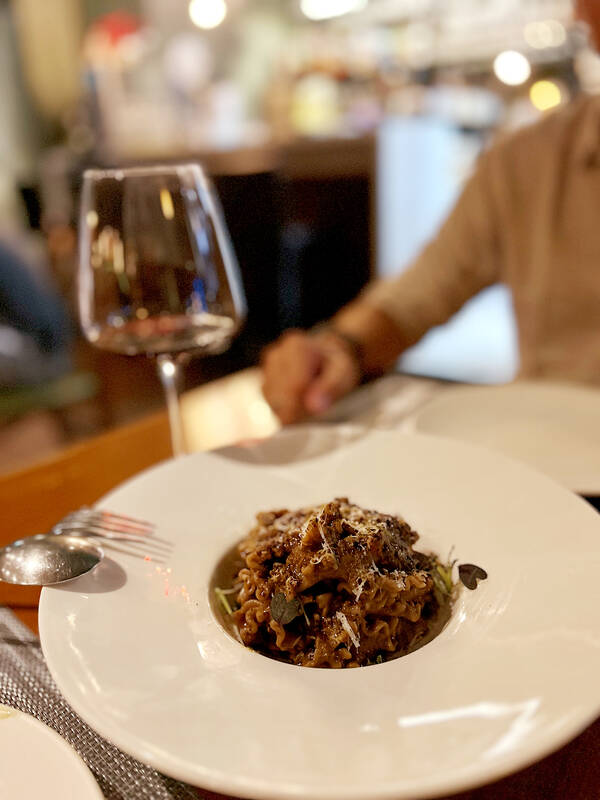
Photo: Hollie Younger, Taipei Times
The atmosphere is food-forward, with an open kitchen center stage. Our tables are simple; no candles, no dim lighting, no ambient music.
The menu is brief, and our waiter directs most of our attention away to the specials board for the freshest offerings. It’s looking good, this place surely must be the real deal, we think.
Our table is sardined somewhere in the middle. The setup is rather reminiscent of an early 2000s “Italian restaurant” — found in a tourist spot a few thousand miles from Italy.
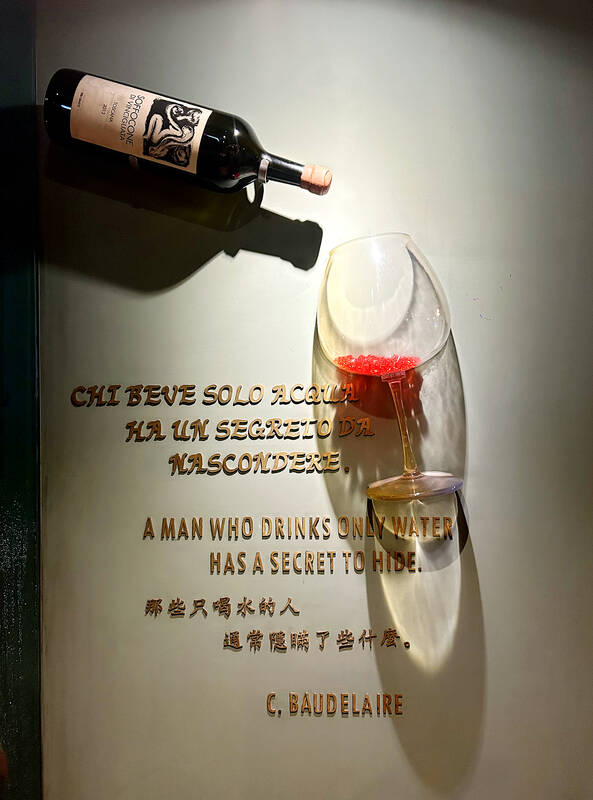
Photo: Hollie Younger, Taipei Times
Some candles, music and romance were actually much needed to distract from the lackluster menu. And the teeth-clinchingly awkward date happening less than a meter to our left.
The wine menu is extensive and our waiter Laurence is knowledgeable, allowing us to try two house wines sold by the glass. We opt for two glasses of the drier Corvina Veronese (NT$250) that go down a treat.
The high point of the night might just have been the bread, freshly baked, warm and even complimentary focaccia and sourdough with some seriously good olive oil, balsamic and salty butter.
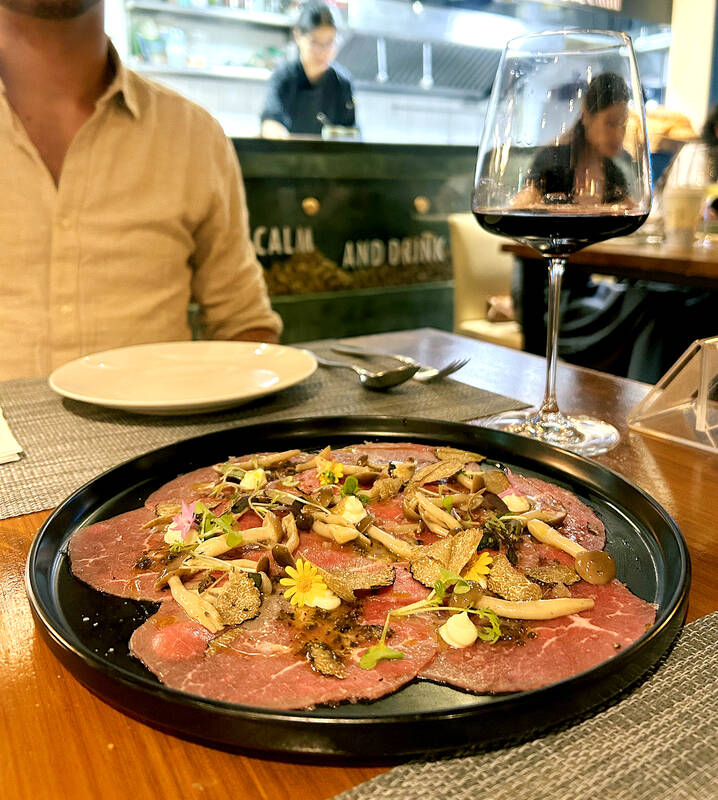
Photo: Hollie Younger, Taipei Times
We lap up our very enthusiastic waiter’s recommendations and start with the Carne Cruda al’Albese (NT$520), round slices of fleshy raw beef topped with wild mushrooms, generous shavings of black truffle and edible flowers.
This dish, from the Piedmont region of Italy, apparently inspired the later invention of the Carpaccio in 1950.
Authentic as it may be, the beef was far thicker than a wafer-thin carpaccio, almost more comparable to stringy slices of uncooked steak. As a bite-sized hors d’ouvre, it would work. But approaching my third slice, it was fibrous, chewy and a little bloody, with a citrusy dressing almost exacerbating the meat’s acidity and unpleasant mouthfeel. This can perhaps be attributed to personal taste; it looked beautiful, it was luxurious and truffle never goes unwanted.
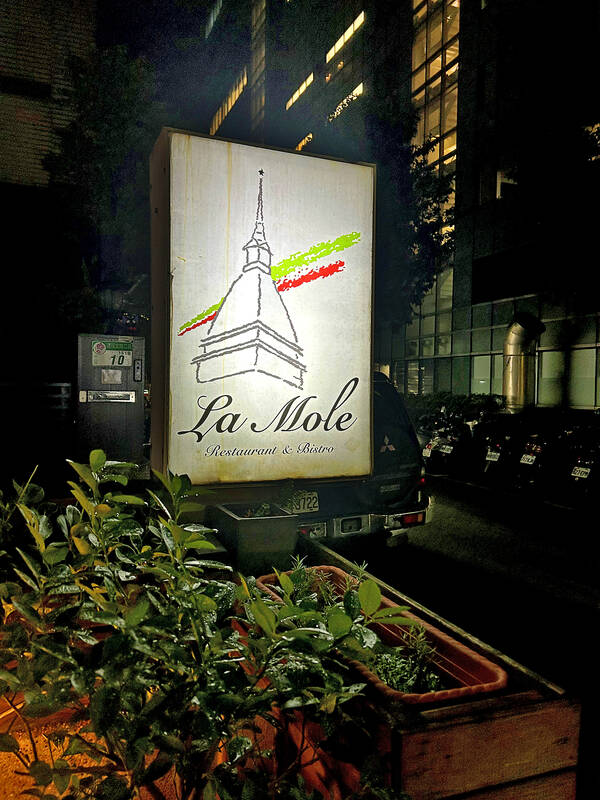
Photo: Hollie Younger, Taipei Times
I would have opted for the prosciutto appetizer, but theirs is made in Taiwan. Disappointing, having dined on imported Italian cuts at La Piada and Iberico Ham flown in from Spain at JUJU Spanish Gastrobar.
For mains, we head back to the specials board with the highly recommended Ragu di Cervo (NT$520), using curly ribbons of Reginette pasta and a rich veal ragu. The pasta is stunningly al dente and has real bite. But other than that, this was truly nothing to write home about.
The veal is from New Zealand, we’re told, Taiwanese veal would be too rich. This dish tasted like a beef lasagna without the bechamel sauce — quite average. I would’ve added a healthy glug of red wine and a smattering of black pepper.
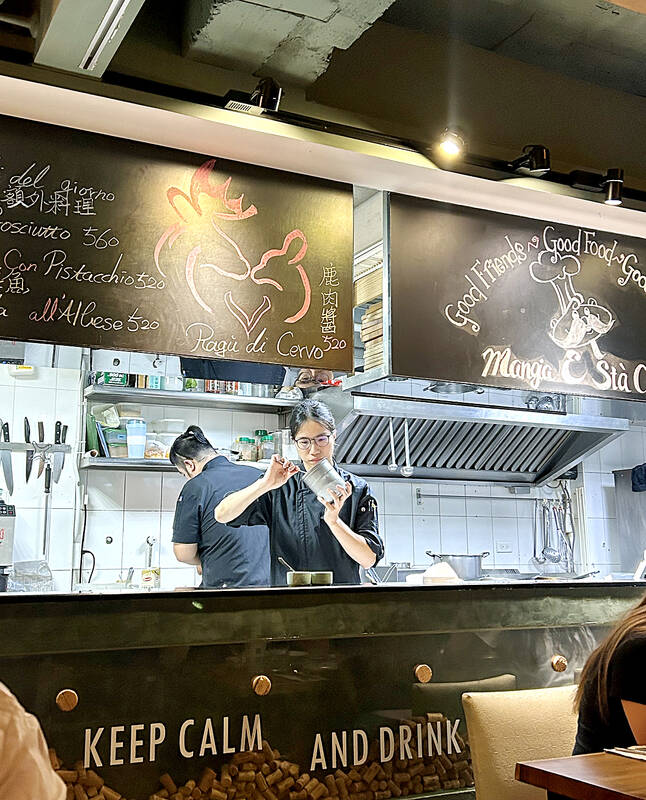
Photo: Hollie Younger, Taipei Times
Lastly, we head onto the eight-year bestseller, its picture plastered across Instagram and Google reviews, coated with extravagant shavings of speckled truffle.
This is the “rigatoni pasta, sausage and mushrooms cream sauce with fresh black truffle” (NT$580).
It was, to quote my date, “good.” Not outstanding or life-changing or must-eat-again. I love truffles as much as the next, but I recognize that no matter how many lashings of it you use, it can’t carry an entire dish.
Again, we wanted more pepper. Again, it wasn’t offered. In hindsight, as we glugged gallons of water on returning home, our palates wanted to counteract the over-salting.
We forgo dessert after a poor CP value experience and are treated to a shot of house-made “Orangecello,” a twist on Limoncello with a zingy taste of orange rind, a natural sweetness and a strong boozy finish.
Although the chef is from Piedmont himself, the food did feel a little catered to Taiwanese tastes and just, well, outdated.
My impression is that La Mole has been riding on an eight-year high of good reviews and word of mouth. But meanwhile, hotter, fresher spots are popping up across the city with more attractive price points, run by Italian owners and chefs, using imported produce and sporting zingy new menus. Ironically, see my review of Black Pepper.
For now, La Mole feels a little stale, trapped in a bygone era when authentic Italian was the only benchmark for success in Taipei. My advice? Crack some pepper, ease on the truffle and please light some damn candles.

It’s always a pleasure to see something one has long advocated slowly become reality. The late August visit of a delegation to the Philippines led by Deputy Minister of Agriculture Huang Chao-ching (黃昭欽), Chair of Chinese International Economic Cooperation Association Joseph Lyu (呂桔誠) and US-Taiwan Business Council vice president, Lotta Danielsson, was yet another example of how the two nations are drawing closer together. The security threat from the People’s Republic of China (PRC), along with their complementary economies, is finally fostering growth in ties. Interestingly, officials from both sides often refer to a shared Austronesian heritage when arguing for
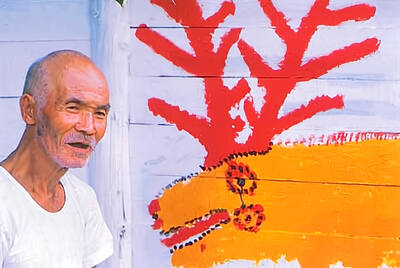
Nov.10 to Nov.16 As he moved a large stone that had fallen from a truck near his field, 65-year-old Lin Yuan (林淵) felt a sudden urge. He fetched his tools and began to carve. The recently retired farmer had been feeling restless after a lifetime of hard labor in Yuchi Township (魚池), Nantou County. His first piece, Stone Fairy Maiden (石仙姑), completed in 1977, was reportedly a representation of his late wife. This version of how Lin began his late-life art career is recorded in Nantou County historian Teng Hsiang-yang’s (鄧相揚) 2009 biography of him. His expressive work eventually caught the attention
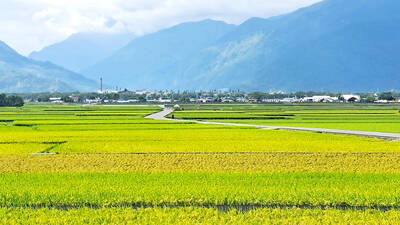
Late last month the Executive Yuan approved a proposal from the Ministry of Labor to allow the hospitality industry to recruit mid-level migrant workers. The industry, surveys said, was short 6,600 laborers. In reality, it is already heavily using illegal foreign workers — foreign wives of foreign residents who cannot work, runaways and illegally moonlighting factory workers. The proposal thus merely legalizes what already exists. The government could generate a similar legal labor supply simply by legalizing moonlighting and permitting spouses of legal residents to work legally on their current visa. But after 30 years of advocating for that reform,
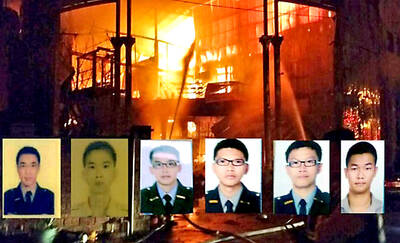
Cheng Shao-shu (鄭少書) was advancing alone through a smoke-filled corridor in Miaoli, when he suddenly realized he couldn’t breathe. The firefighter tore off his mask, only for the hot air to scorch his lungs. Gasping, he snapped the mask back on and scrambled out of the inferno. Cheng says he survived the fire only because he was near a door; had he been deeper inside the building, he wouldn’t have made it out. “It may not be the toughest job, but it is certainly one of the most dangerous,” Cheng says. Over the past two decades, 77 firefighters have died in the